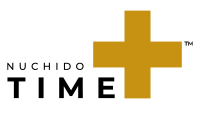If you’ve heard of NAD+ supplements then you’ve probably heard of NAD+ precursor supplements such as NMN and NR. One of the most common questions we receive at Nuchido is why we don’t include these ingredients in our formulation and instead use nicotinamide (NAM).
This article will compare each of the NAD+ precursors and highlight the benefits of NAM and why we chose to include it in the Nuchido TIME+ formulation.
NAD+ biology is complex
Understanding NAD+ biology can be complex. Multiple precursors and pathways can be used to make NAD+ and there are also many pathways that degrade NAD+. NAD+ itself also flips between various states as it donates and accepts electrons during energy production.

What are NAD+ precursors?
NAD+ precursors are the raw materials that the body uses to make NAD+ - the NAD+ building blocks.
There are 5 different precursors that the body can use to make NAD+:
- Tryptophan
- Nicotinic acid (NA)
- Nicotinamide (NAM)
- Nicotinamide riboside (NR)
- Nicotinamide mononucleotide (NMN)
All of these precursors are structurally similar but there are some important differences in the way they act in the body. For example, nicotinic acid is known to cause flushing whilst nicotinamide does not.
Precursors must work inside the cells
NAM, NR and NMN can all increase NAD+ production, but the big hurdle that many people don’t consider is actually getting the precursor into the cell in the first place. Increasing precursor levels in the blood isn’t beneficial as NAD+ production occurs inside of the cells.
And cells don’t just let anything pass in and out. In fact, the passage of molecules across the cell membrane is highly controlled, and we know that both NR and NMN require special transport channels to cross the cell membrane and access the cells, but not all cells have these channels.

In comparison, NAM can freely diffuse across the cell membrane without a channel, meaning it can be absorbed by many more cells. This is favourable because we want to increase NAD+ levels in as many different cell types as possible.
There is also growing evidence that when taken orally, NR is metabolised to NAM in the liver, suggesting that when using NR, it is actually NAM that is doing all the work. Other studies also suggest that the majority of NMN is metabolised into NR before it’s taken up by the cells.
NAM is the body’s preferred precursor
Nicotinamide is the preferred precursor for NAD+ production. It is the circulating precursor that the majority of our NAD+ is naturally made from by the Salvage Pathway. In normal physiological circumstances NAD+ is not made solely from NR or NMN.

Some people argue that a drawback of NAM is that it might inhibit the sirtuins at high doses. Sirtuins are a group of NAD+ dependent proteins that promote cellular health and coordinate many of the benefits of NAD+. However, the studies cited to support this theory have all been conducted in vitro using isolated cells in culture and exceptionally high concentrations of NAM that would never be reached under normal physiological conditions. This is because the salvage pathway efficiently converts NAM into fresh NAD+ meaning that NAM is unlikely to hang around for long enough inside healthy cells as it’s rapidly converted to NAD+.
So whilst NR and NMN have gained popularity recently, the research indicates that they are not the best method to boost NAD+ and have several drawbacks compared to nicotinamide which is included as the precursor in the Nuchido TIME+ formulation amongst many other beneficial ingredients that fix the root causes of NAD+ decline.
